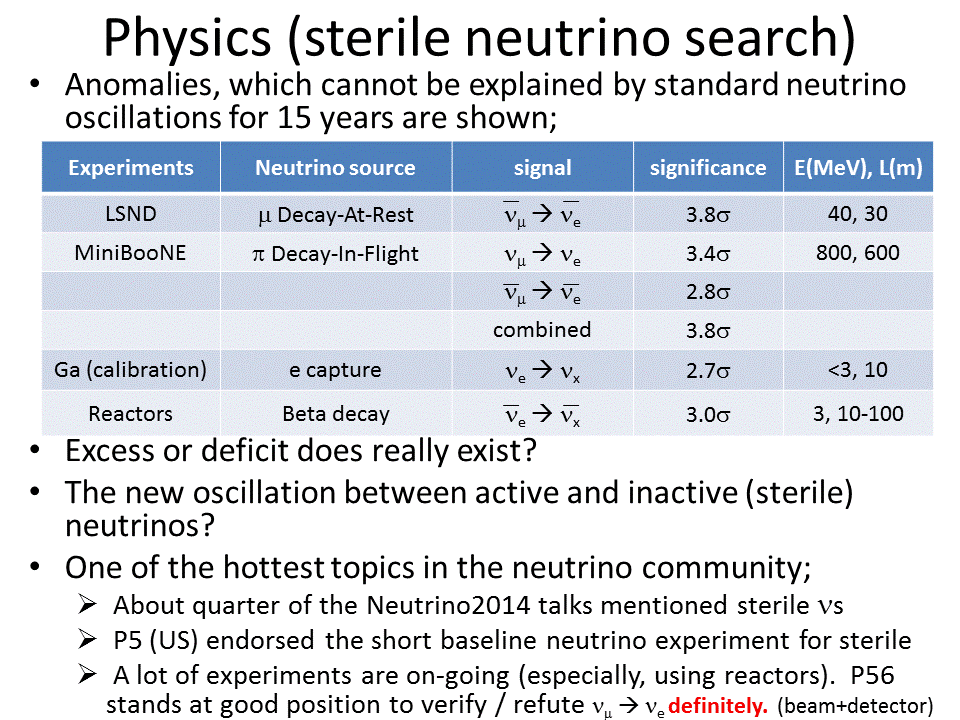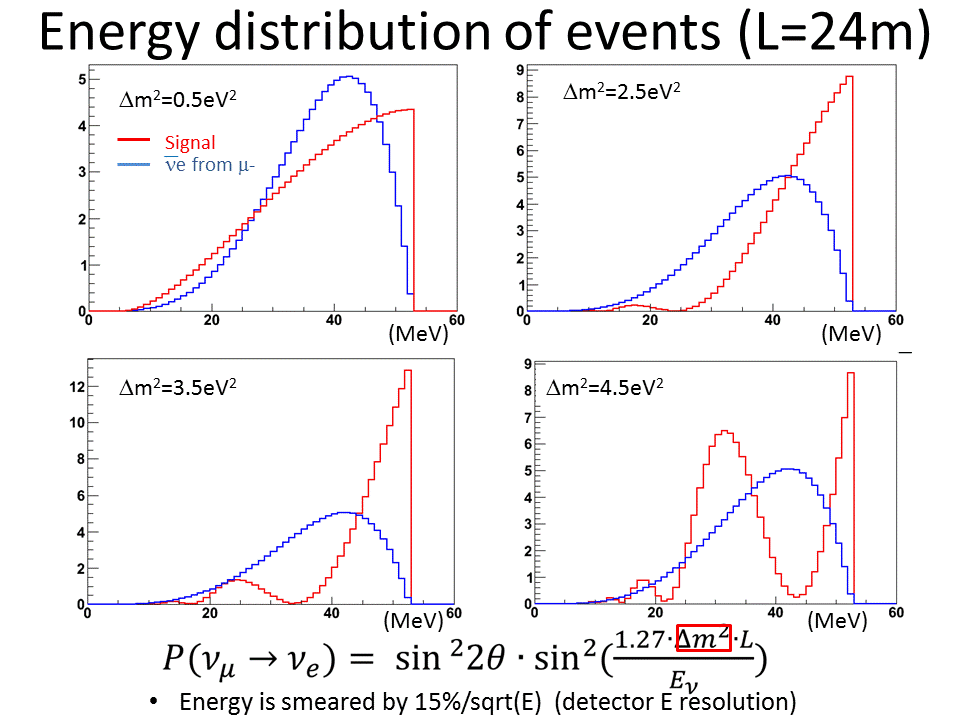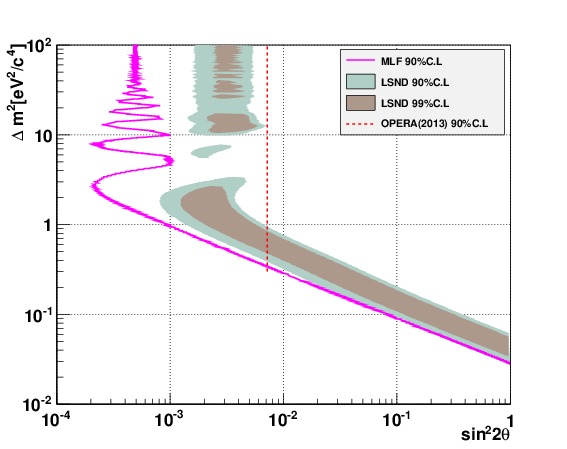Introduction for Our Researches
JSNS2 (J-PARC E56)
JSNS2 (J-PARC Sterile Neutrino Search at J-PARC Spallation Neutron Source )
The experimental proposal was submitted to the J-PARC PAC on September 2013 officially. This experiment searches for the neutrino oscillations with short baseline (~24m) using the large amount of neutrinos created at the mercury target of the MLF (Material and Life science experimental Facility). This kind of oscillation is happened only in the case that we have sterile (no-weak interactive) neutrinos, where the standard neutrino oscillation matrix cannot explain.
(Proposal) ![]()
Sterile Neutrinos
Sterile Neutrinos don't have weak interactions and they are one of the candidates of the dark matter.
The experiments shown in the bottom table indicate the existence via the neutrino oscillations with the short baselines.

LSND and MiniBooNE experiments indicate the oscillation from (anti-)muon neutrinos to (anti-)electron neutrinos. On the other hand, reactor experiments and solar neutrino experiment using Ga (during the calibration using a radioactive source ) indictae that from the (anti-)electron neutrino to sterile neutrinos.
These must not be explained with the standard neutrino oscillations with 3 (weak interactive) neutrinos scheme because the indictaed Delta m squared region is about 1.0 eV^2 and crucially different from the 3 different mass scheme.
However, these results are still not convinced yet by the neutrino community because there may be hidden systematics due to the beam structure or mis energy reconstruction.
MLF building and the location of the detector

Overview of the MLF building. Red box indicates the candidate of the detector location.
3GeV protons are injected to MLF from right hand side of the Fig. and are interacted at the mercury target. Then pions and muons are created, decays and produce the neutrinos. We utilize them.
Neutrino Production Timing

Proton beam timing at the MLF and the production timing of the neutrinos at the mercury target. The horizontal axis shows the timing from the proton beam arrivals, and the vertical axis shows the number of neutrinos.
At the top of the plot, the time structure of 2 bunches of the proton beam are shown, and these two bunches create the one spill, which is repeated by 40ms.
Neutrinos created by pions and kaons are produced at the similar timing of the protons, while the neutrinos come from muons are created much later than proton timing due to their life times.
Using this very nice time structure, we can select the neutrinos from muons decay-at-rest very efficiently. All other neutrinos or fast neutron background around the proton beam timing can be reduced very much. Energy distribution of the neutrinos from muon decay-at-rest is also very precisely known, therefore the JSNS2 experiment will produce the good physics results.
The cosmic ray related background can be dramatically reduced using the timing gate from the beam timing from 1 to 10 micro seconds as well.
Detector

JSNS2 liquid scintillator detector and the principle of the detection.
The detector uses the Gd-loaded liquid scintillator, and oscillated anti-electron neutrinos are detected via the inverse beta decays shown in middle-right schematic. This interaction emits the positron and the neutron from the anti-electron neutrino and free-proton in the liquid scintillator. The positron emit the scintillation light immediately while the neutron is thermalized and captured by the Gd, and emits the gammas with the total energy of 8 MeV, 30 micro seconds later than the positron signal. These signals can be used as the coincidnce signal to reduce the accidental background significantly.
Energy Distributions

The expected energy distributions where detectors are located at the 3rd floor of the MLF. The baseline is assumed to be 24 meters from the mercury target.
The blue line shows the dominant background, while the red show the case which there is the oscillation with sterile neutrinos with various Delta mass squared.
Expected Sensitivities

Expected sensitivity of the JSNS2 with 5 years times MW beam. Pink line shows the excluded region of the JSNS2 with 90% C.L.
The green (99% C.L.) and the brown (90% C.L.) are the allowed region from the LSND experiment. As seen, we can confirm or refute the existence of the sterile neutrinos.
If the results are unclear, we could have a next experimental program with the longer baseline and the larger detectors.


